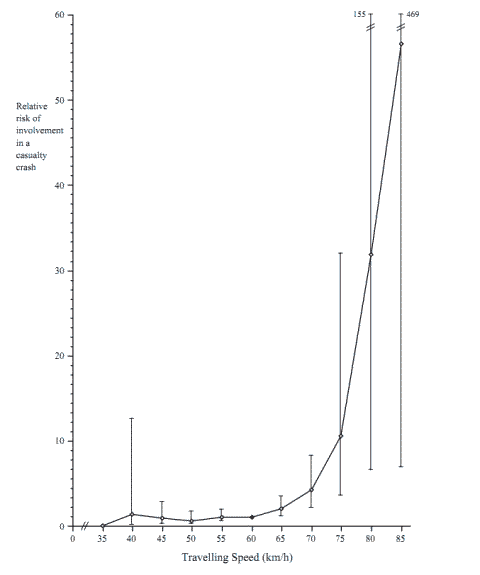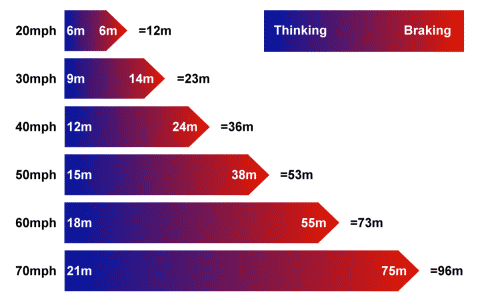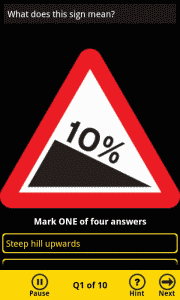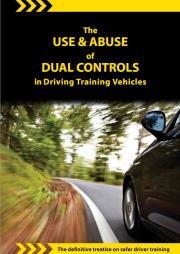
I saw this article in the Daily Mail. Suzette Davenport is the Deputy Chief Constable at Northants Police. She is the first woman to be put in charge of roads policing at ACPO (and took up the post 6 weeks ago).
She simply doesn’t appear to have a clue.
Some of what the article attributes to her makes sense – some sort of probation, and some restrictions are definitely needed for new drivers. But it is when you get down to the nitty-gritty detail that the cracks start to appear.
For one thing, she wants to limit their access to the motorways. Why, for God’s sake? That’s not where they have their accidents.
She wants to force them to stick P plates on their cars. Big deal! I’m sure they’ll drive really carefully after they get one of those.
Davenport justifies all this after seeing “the ruin and havoc” when she was a traffic officer. It’s a shame she didn’t understand it, though. Because she then comes out with the most idiotic and misguided comment imaginable:
At the moment, people learn to drive mainly in calm residential streets when it’s light. They don’t have much experience of driving on busy A-roads or in the dark.
Yet as soon as they get a licence they can drive on motorways at speed and carry as many passengers as they like. The vast majority are responsible but some – especially young people – take risks and drive too quickly.
This is simply not true. Some new drivers might well only be taught on calm streets in the light, but it would need a lot more data for me to accept that this applies to the majority. I teach every night – nights are a popular time – and I see a lot of other instructors around, so a large number of people are actually learning in the dark. Occasionally, I get someone who can only do evenings, and I have to make sure we get a few daytime lessons in at some point.
I also take all – and I mean ALL – my pupils along a dual-carriageway stretch of the A46, explaining that it’s as close as you can get to being on a motorway without actually going on one. It’s at least 10 miles away from the nearest Nottingham test centre, so isn’t going to be on a test route.
The problem with Davenport appears to be that she is trying to do too many things at once, and problems can’t usually be solved like that. She is calling for a complete ban on alcohol for all drivers, and prosecution for those caught using handheld devices. And she is stupidly tying all this into the issue of a graduated licence, which is specifically targeted at young/new drivers.
The prospect of any form of graduated licence is likely to be impeded by someone else with idiotic views. Roads Minister Mike Penning has already said that such restrictions would “unfairly penalise” those relying on cars to get to work or college. Penning apparently thinks that letting them kill themselves instead is a much fairer solution – and a great way to avoid losing votes at the next election, no doubt.
Just for the record, new drivers are paying around £2,000 or more for their first insurance. Hasn’t anyone sussed that this is a great way of keeping them off the roads? (And before anyone says anything, any driver who chooses to drive uninsured has already demonstrated what their attitude on the road is, and they’re not going to be influenced by any form of restriction placed on them).
And also on the insurance issue, £2,000 might be a bit high, but ask any young or new driver what they would consider “payable” and they will come up with a figure that most of us took at least 10 years to get anywhere near – and mostly before they were even born. The effect of a graduated licence on insurance would not “slash premiums” to anything like the level people imagine. And if it did, it would make matters worse by encouraging more people to drive who simply don’t need to.
But back to Suzette Davenport, and her extremely confused outlook on matters. The Mail reports:
Miss Davenport wants serious consideration given to a mandatory ‘P’ scheme. She also believes that new drivers should take extra lessons in motorway driving.
She notched up six penalty points ten years ago when she was twice caught by speed cameras exceeding the 30?mph limit.
Miss Davenport is a keen cyclist, and frequently pulls over drivers who fail to give consideration to cyclists. But she also has a reputation for stopping cyclists who are not wearing helmets, have poor lights or are dressed inappropriately.
Taking each of those paragraphs in turn…
Learners should be allowed on motorways with a driving instructor if you want to address this. FULL STOP. And sticking a P on your car won’t stop you having an accident – it tends to be a bit more complex than that.
Davenport no doubt had a wonderful excuse when she got those points on her licence. It could even have been her driving instructor’s fault. But let’s face facts, here. If the Deputy Chief Constable is such a bad driver that she got speeding points – and she was still allowed to become a Traffic Cop – surely that points to the deeper malady in our society?
And the malady goes even deeper in that last paragraph. Cyclists are one of the biggest nuisances on the roads, and especially when they use the road instead of the perfectly good cycle path next to it. Roads were designed primarily for cars – not cyclists. Cycle paths, on the other hand, are designed explicitly for cyclists. Yet it would seem that Davenport relishes having a go at motorists who are confronted with these Spandex-clad morons.









